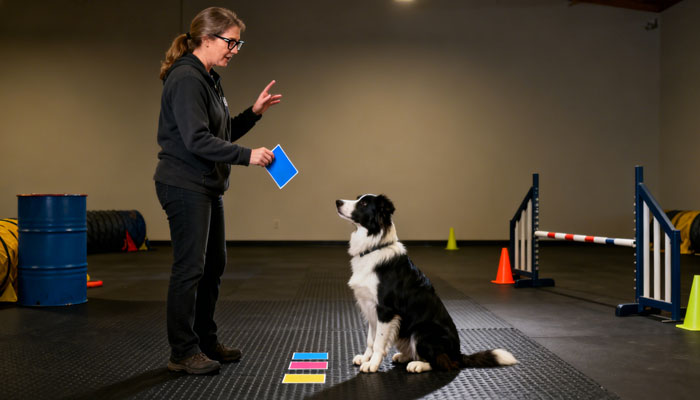Dog Training: Potty Training, Stay, Sit, Shake Hands
1. Potty Training (Most effective after meals) — A fundamental step in dog training
Within the dog training system, potty training is a crucial step in helping dogs establish good habits. During training, lay dry newspaper soaked with the dog’s urine in a designated corner outside its bed or in the bathroom of an apartment. Place paper with its excrement (like newspaper soaked with dried urine) on top—familiar scents help dogs quickly understand the purpose of this spot.
In the early stages of dog training, use a large area of newspaper and gradually guide the dog to relieve itself only within that space. Immediately praise the dog when it gets it right to reinforce the correct behavior; if it makes a mistake, give a brief but firm reprimand. Once the designated potty spot is established, avoid moving it arbitrarily. This not only enhances training effectiveness but also expands the dog’s activity range within the home. Note that when teaching puppies, wait until one action is mastered before introducing the next. Maintain patience throughout the training process and avoid rushing.
2. “Shake Hands” Training (Most effective when done before meals) — An interactive skill in dog training
“Shake hands” training is a crucial element in dog training to enhance human-dog interaction. It should only be introduced after the dog is familiar with the ‘sit’ command and action. During training, wait until the dog sits quietly, then gently lift its left or right paw while saying “shake hands.” Repeat the exercise until the dog understands the command and responds with the action, completing this stage of the dog training goal. To reinforce learning, repeat the training several times daily. However, avoid rushing the process—overdoing it may cause resistance and hinder overall progress.
3. “Stay” and “Come” Training — Safety and Obedience in Dog Training
In dog training, “Stay” and “Come” are core commands for ensuring the dog’s safety and enhancing obedience. When training “Stay,” place food in front of the dog while it eats and give the ‘Stay’ command. Repeat this exercise until the dog understands the meaning of “temporarily halting its action.” This is a crucial step in cultivating discipline during dog training.
“Come” training is best practiced during walks as part of recall training: When you call your dog, praise it immediately if it comes right away. If it ignores you or runs off, avoid scolding or chasing it; wait a moment before trying again. In daily training, establish the habit of keeping your dog within 10 meters of you during free play. Leash training from a young age is also vital (especially when crossing roads to prevent accidents). When releasing the leash in open areas, promptly call the dog back if it strays slightly. Consistent training will cultivate the habit of staying close to its owner.
4. “Sit” Training (most effective before meals) — The Core Foundation of Obedience Training
“Sit” is the most fundamental obedience command in dog training and a prerequisite for many subsequent commands. When first introducing this command, the dog won’t immediately understand “sit.” Gently press down on its hindquarters while clearly giving the “sit” command. Repeat this guidance until the dog comprehends and sits quietly—this marks the completion of this training stage.
As an introductory command in dog training, “Sit” requires frequent repetition. Only after the dog responds reliably should you progress to advanced commands like “Shake,” ensuring training advances step-by-step with solid, effective results.
admin
-
Sale!

Washable Pet Cooling Pad for Cats and Dogs
$10.99Original price was: $10.99.$9.99Current price is: $9.99. This product has multiple variants. The options may be chosen on the product page -
Sale!

Washable Cat Window Hammock Cooling Bed
$23.99Original price was: $23.99.$22.99Current price is: $22.99. -
Sale!

Tropical Amphibian Rainforest Tank, Lizard Cage
$38.99Original price was: $38.99.$36.99Current price is: $36.99. -
Sale!

Silent 4-in-1 Waterproof Charging Dog Hair Trimmer
$49.88Original price was: $49.88.$47.99Current price is: $47.99.
